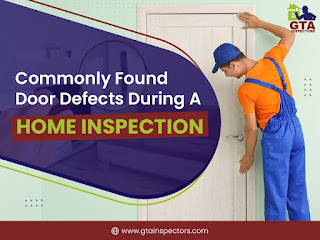Property Inspection Management for HOA Communities: Best Practices and Challenges
Homeowners Association (HOA) communities have become increasingly popular in recent years, offering many advantages to homeowners including a sense of community, amenities, and shared spaces. However, managing a community of homes can be a complex task, requiring attention to detail and a well-organized system to ensure everything runs smoothly. One of the most important aspects of community management is property inspection. Property inspections are necessary to identify and address any maintenance, repair or safety issues, which, if not addressed, can pose a threat to the community and its residents.
In this blog, we will discuss best practices and challenges in property inspection management for HOA communities, and how to address them.
A snagging company is a specialist firm that provides property inspection services, particularly for new builds. In Dubai, snagging companies are widely used to ensure that all new homes meet the required standards and that any defects or issues are addressed before residents move in. A property inspection company in Dubai can help HOAs to identify potential problems early on and ensure that they are addressed in a timely manner, minimizing the risk of costly repairs down the line.
Best Practices for Property Inspection Management:
Regular Inspections: Regular inspections are essential for effective property inspection management. It is recommended that HOAs conduct at least one inspection per year to identify any issues and address them before they become more serious.
Detailed Checklists: A detailed checklist of all the items to be inspected should be created and followed during each inspection. This will help ensure that all aspects of the property are inspected, from the roof to the basement, and everything in between.
Involve Residents: Involving residents in the inspection process can be beneficial for both the HOA and the residents. Residents can help identify issues that might have been overlooked, and the HOA can keep them informed about the status of any repairs or maintenance that needs to be carried out.
Use Technology: Technology can greatly assist in property inspection management. Apps or software that can store and organize inspection results, schedule inspections and track maintenance can save time and resources, and help keep everyone informed and up-to-date.
Challenges in Property Inspection Management:
Lack of Resources: One of the biggest challenges in property inspection management is the lack of resources, both in terms of time and personnel. With many tasks to be carried out, it can be difficult to allocate sufficient time and manpower to carry out regular inspections.
Resistance from Residents: Some residents may not be happy about the idea of regular inspections, especially if they feel that their privacy is being invaded. It is important for HOAs to communicate the reasons for inspections and the benefits they bring, so that residents understand the importance of the process.
Cost: Property inspections can be costly, especially if a snagging company is used. HOAs need to carefully manage their budget to ensure that they have sufficient resources for regular inspections, without overspending.
Conclusion:
In conclusion, property inspection management is an important aspect of HOA community management. Regular inspections, involving residents, using technology and having detailed checklists are some of the best practices to ensure that all aspects of the property are inspected and addressed in a timely manner. However, there are also challenges, such as a lack of resources, resistance from residents, and cost, which need to be addressed. By working together, HOAs and residents can ensure that the community remains safe, well-maintained, and a great place to live.


.png)
.jpg)
Comments
Post a Comment